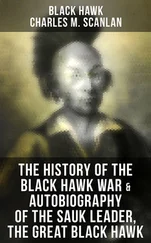Thus far their course had been scouted by the exploratory voyage of Bartolomeu Diaz a decade earlier; now they were entering uncharted waters. With scurvy starting to get a grip on his exhausted crew, da Gama cautiously worked his way north along Africa’s east coast in an atmosphere of steadily mounting tension. Stopping for supplies and intelligence at various ports along the way, the Portuguese met with mixed receptions, ranging from wary cooperation to bewilderment and outright hostility. A lucky break came at the port of Malindi, in present-day Kenya, where they had the immense good fortune to pick up an Arab pilot familiar with the crossing of the Indian Ocean. By now it was April, and the first gatherings of the summer monsoon, blowing wet and blustery out of the south-west, propelled them across the ocean in a mere twenty-three days. On 17 May, ten months after leaving Portugal, a lookout smelled vegetation on the sea air. The following day, through steam and sheets of scudding monsoon rain, the mountains of the Indian hinterland at last rose into view. They had reached Malabar, India’s Spice Coast.
Thanks to good fortune and the skill of their pilot they were no more than a day’s sailing from Calicut, the principal port of the coast. Though they naturally had little idea of what to expect, the newcomers were not wholly unprepared. With their long experience of voyages down the west coast of Africa, the Portuguese were accustomed to dealing with unfamiliar places and peoples. On this as on earlier voyages, they followed the unsavoury but prudent custom of bringing along an individual known as a degredado, generally a felon or outcast such as a converted Jew, whose role it was to be sent ashore to handle the first contacts with the local population. In the not unlikely event of a hostile reception the degredado was considered expendable. And so, while the rest of the crew remained safely on board, on 21 May an anonymous criminal from the Algarve was put ashore to take his chances.
A crowd rapidly formed around the exotic, pale-faced stranger. To the bemused Indians little was clear, other than that he was not Chinese or Malay, regular visitors in Calicut’s cosmopolitan marketplace. The most reasonable assumption was that he came from somewhere in the Islamic world, though he showed no signs of comprehending the few words of Arabic addressed to him. For want of a better option he was escorted to the house of two resident Tunisian merchants who were, naturally enough, stunned to see a European march through the door. Fortunately, the Tunisians spoke basic Genoese and Castilian, so some rudimentary communication was possible. A famous dialogue ensued:
Tunisian: ‘What the devil brought you here?’
Degredado: ‘We came in search of Christians and spices.’
The answer would not have pleased the Tunisians, but as summaries go this was an admirably succinct account of the expedition’s aims.
Spices figured no less prominently in da Gama’s motivation than they had in Columbus’s voyage five years earlier. The Christians too were more than a matter of lip service; to some extent commercial and religious interests went together. Yet of the two the spices offered richer pickings, and there could be little doubt which mattered more in the minds of the crew and those who came after them. The anonymous narrator who has left the sole surviving account of the voyage goes straight to the heart of the matter:
In the year 1497, King Manuel, the first of that name in Portugal, sent four ships out, which left on a quest for spices, captained by Vasco da Gama, his brother Paulo da Gama and Nicolau Coelho. We left Restelo on Saturday, 8 July 1497, for a voyage which we hope God allows to end in his service. Amen.
Their prayers were not in vain. Whereas Columbus was an entire hemisphere off track, the Portuguese had hit the motherlode.
When da Gama’s degredado splashed dazedly ashore in May 1498, the Malabar coast was the epicentre of the global spice trade; to some extent, it still is. Located in the extreme south-west of the subcontinent, Malabar takes its name from the mountains that sailors see long before the shore comes into view, a suitably international hybrid of a Dravidian head ( mala, ‘hill’) grafted onto an Arabic suffix ( barr, ‘continent’), the latter supplied by the Arab traders who dominated the westward trade from ancient times through to the end of the Middle Ages. The mountains are the Western Ghats, whose bluffs and escarpments form the western limit of the Deccan plateau. The coast, a low-lying, fish-shaped band of land squeezed between sea and mountains, was, and is, a centre of both spice production and distribution. Calicut was the largest but not the only entrepôt of the coast. A string of lesser ports received fine spices from further east for resale and reshipment west, onward across the Indian Ocean to Arabia and Europe. From the jungles of the Ghats merchants brought ginger, cardamom and a local variety of cinnamon down from the hills, punting their goods through the rivers and backwaters that maze across the plain to the sea. Above all, they brought pepper.
Pepper was the cornerstone of Malabar’s prosperity: what the Persian Gulf today is to oil, Malabar was to pepper, with similarly mixed blessings for the region and its residents. The plant that bears the spice, Piper nigrum, is native to the jungles that cloak the lower slopes of the Ghats, a climbing vine that thrives in the dappled light, shade, heat and wet of the tropical undergrowth. Though it has long since been transplanted around much of the tropical world, connoisseurs of the spice claim that Malabar still produces the finest. Like practically every other aspect of life in Malabar, pepper’s cycle of harvest and trade moves to the seasonal rhythms of the monsoon (the word derives from the Arabic mawsim, ‘season’). In late May or early June the rains sweep in on a front of gusty south-westerlies from the Arabian Sea: the ‘burst’. Over the next few months the first blooms appear on the pepper vines as the upper slopes of the Ghats are drenched in a daily Wagnerian deluge of inky clouds and crashing thunderstorms. By September, the rain falls less heavily, and the clouds and mists boil away up the valleys and gorges. A long, sultry heat descends on the hills. In November, the winds flip 180 degrees, blowing mild and dry out of the north-east as the hot air of the central Asian summer is sucked southward, down the subcontinent from the Himalayas, across the Indian plain to the ocean. In this hot, dry atmosphere the pepper berries cluster and swell; their pungent, biting flavour ripens and deepens. By December they are ready for harvest. Walk any distance in rural Malabar before the return of the monsoon and you are likely to have to make a detour to avoid a patch of peppercorns left out to dry in any space available.
Thanks to the combination of spice and monsoon, when Malabar first emerges into history the coast was already a crossroads frequented by traders and travellers from around the Indian Ocean world. The spices were the end, the monsoon winds the means. There were communities of Chinese and Jews here from the early centuries AD, the latter constituting one of the oldest Jewish communities outside the Middle East. Long before then there had been visitors from Mesopotamia: pieces of teak – another attraction of the coast – were found by the archaeologist Leonard Wooley at Ur of the Chaldees, dating from around 600 BC. * By the time of Christ, when da Gama’s native Portugal was a bleak and barren wilderness of Lusitanian tribesmen peering out on the sailless waters of the Atlantic, Greek mariners were arriving in Malabar in such numbers that one recherché Sanskrit name for pepper was yavanesta , ‘the passion of the Greeks’. Thanks largely to its vegetable wealth Islam was established here from the seventh century onward; Indian Muslims thriving, settling and converting over half a millennium before their Moghul co-religionists stormed down from central Asia. Even in da Gama’s day there were a handful of intrepid Italian merchants who had arrived by the long and dangerous overland route from the Levant. When da Gama dropped anchor Malabar was the most important link in a vast and vastly profitable network, and had been so for centuries.
Читать дальше











